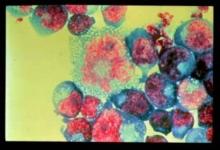HIV testing should become a part of routine care for adolescents and young adults.
Begin to offer testing to patients aged 13 years as part of regular well-visit exams. Testing all patients at the onset of adolescence helps establish that this is part of routine and universal health care for all of your patients. By testing everyone, we are trying to remove the stigma associated with HIV testing and the implication that certain individuals or members of a group are at "high risk" and, therefore, are the only ones who need to be tested.
It’s probably a good idea to inform parents of your plan to routinely test their adolescent at this initial 13-year-old well-child visit. This helps establish the routine nature of the test and prepares them for repeat testing in years to come.
We do encounter hesitant parents. We get parents who say, "Doctor, my son or daughter is not at risk!" I’m happy to say to parents, "I’m sure that is true, but again, it’s very important for us to establish that this is a routine test, the same way we do routine testing for risk of anemia and risk of diabetes in teenagers." Again, emphasize that your approach is universal, so the parent understands that you are not singling out their adolescent for any reason.
Counseling the adolescent patient with regard to the risks of acquiring HIV infection is an important aspect of testing for HIV, but should never be a limitation to doing an HIV test. In other words, if you don’t have the time to counsel a patient as fully as you’d like, that doesn’t mean that you shouldn’t be testing that patient. Ideally, you will have the time to obtain a careful and thoughtful history with regard to risk behaviors. Also ask appropriate anticipatory guidance questions to help direct you in counseling your individual patient.
It is important to remember that even during the initial "adolescent visit" at 13 years, the adolescent should be granted confidentiality with regard to answering risk-behavior questions. I can almost guarantee you that a provider is not going to get a truthful answer from that adolescent regarding sex and drugs if they are being questioned in the presence of their parents.
A good approach to counseling is to start by asking very general questions. You can say, for instance, "I know many kids these days are having sexual contact that could put them at risk for sexually transmitted infections, including HIV infection. As far as you know, are any of your friends currently having sexual contact that would put them at that kind of risk?" Their answer will be yes, no, or maybe. Then your follow-up question is, "Of course, you know I’m interested in you as my patient. Are you currently having any kind of sexual contact that might put you at risk of HIV infection? By that I mean are you having oral sex, vaginal sex, or anal sex?" I think it’s important to be this specific because adolescents have some set attitudes as to what is and what is not "sexual contact" or "sexual activity," and these may not be the same as your or my ideas about these things. It is also good to know the nature of their actual behaviors, because some sexual behaviors increase the risk of HIV and STD infection.
This regular questioning needs to be supplemented by regular testing for HIV status. Even if you’ve cared for a patient since birth, there is very strong likelihood that – at least at some point during their teenage years – they may not be completely forthright about their behaviors (even without their parents in the room).
Our patients who are sexually active have come to understand that condom use is now the socially acceptable norm. Therefore, very few of them will report that they did not use condoms at their last intercourse. However, despite these universal claims, in our practice we still run an asymptomatic chlamydia rate of about 12% among young women and about 7% among young men. Obviously, someone is not using condoms at each and every sexual encounter.
One way to explain your testing strategy to a teenage patient is to say, "Today we’re going to do some tests. We are going to do a hemoglobin test and a hematocrit because you’re a young, menstruating female, and we know you’re at risk of anemia. We’re going to look at your kidney function and glucose, and make sure you’re not at risk of diabetes; and we’re going to do a routine HIV test because it’s part of the testing we do in all teenagers."


